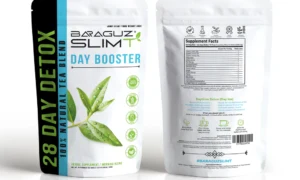Introduction: The Rising Trend of Concrete Floor Polishing
In the world of interior design and architecture, concrete floor polishing is fast becoming a popular trend. This technique transforms a simple concrete floor into a stylish, durable, and versatile surface. But what exactly is concrete floor polishing? How is it done, and what are its benefits? In this comprehensive guide, we’ll delve into the world of polished concrete floors and how you can achieve this look in your own space.
1. Understanding Concrete Floor Polishing
Concrete floor polishing involves grinding down a concrete surface to achieve a smooth, shiny finish. This process uses heavy-duty polishing machines, which often include diamond-impregnated disks to gradually grind down surfaces to the desired degree of shine and smoothness.
Polishing concrete isn’t just about aesthetic appeal. It also strengthens the concrete, making it more resilient to wear and tear. Whether it’s for residential or commercial use, concrete floor polishing offers a long-lasting and sustainable flooring solution.
2. The Benefits of Concrete Floor Polishing
Polished concrete floors come with a host of benefits. First, they are incredibly durable. Unlike other flooring options, polished concrete withstands heavy foot traffic and doesn’t easily chip or scratch.
Second, polished concrete floors are low maintenance. They resist dust and dirt accumulation, so a quick sweep or mop keeps them looking their best.
Third, polished concrete floors are cost-effective. While the initial cost might seem high, the longevity and low maintenance make it a worthwhile investment in the long run.
Lastly, polished concrete floors are eco-friendly. The process uses existing materials, reducing the need for additional resources.

Concrete Floor Polishing
3. Techniques in Concrete Floor Polishing
There are two main techniques used in concrete floor polishing: dry and wet. The dry method is the most common process. It involves using a dust-containment system that vacuums up the dust created during the polishing process.
On the other hand, the wet method uses water to cool the diamond abrasives and eliminate dust. However, it creates a slurry that needs to be disposed of properly, making it less eco-friendly than the dry method.
4. DIY vs. Professional Concrete Floor Polishing
While it is possible to polish a concrete floor yourself, it’s a labor-intensive process that requires specific equipment. Unless you have previous experience, it’s recommended to hire a professional. They have the training and expertise to achieve a consistent and high-quality finish.
5. Caring for Your Polished Concrete Floor
Once your concrete floor is polished, it’s important to maintain it properly to keep it looking its best. Regular sweeping and mopping will keep the surface free from dust and grime. For deeper cleaning, use a pH-neutral cleaner to avoid damaging the polished surface.
Conclusion: Making the Switch to Polished Concrete Floors
Concrete floor polishing is more than just a trend; it’s a sustainable, practical, and attractive flooring solution that’s here to stay. Whether you’re building a new home or remodeling an existing one, consider the benefits of polished concrete flooring. It’s a decision that will not only enhance the beauty of your space but also prove to be a smart investment in the long run.












